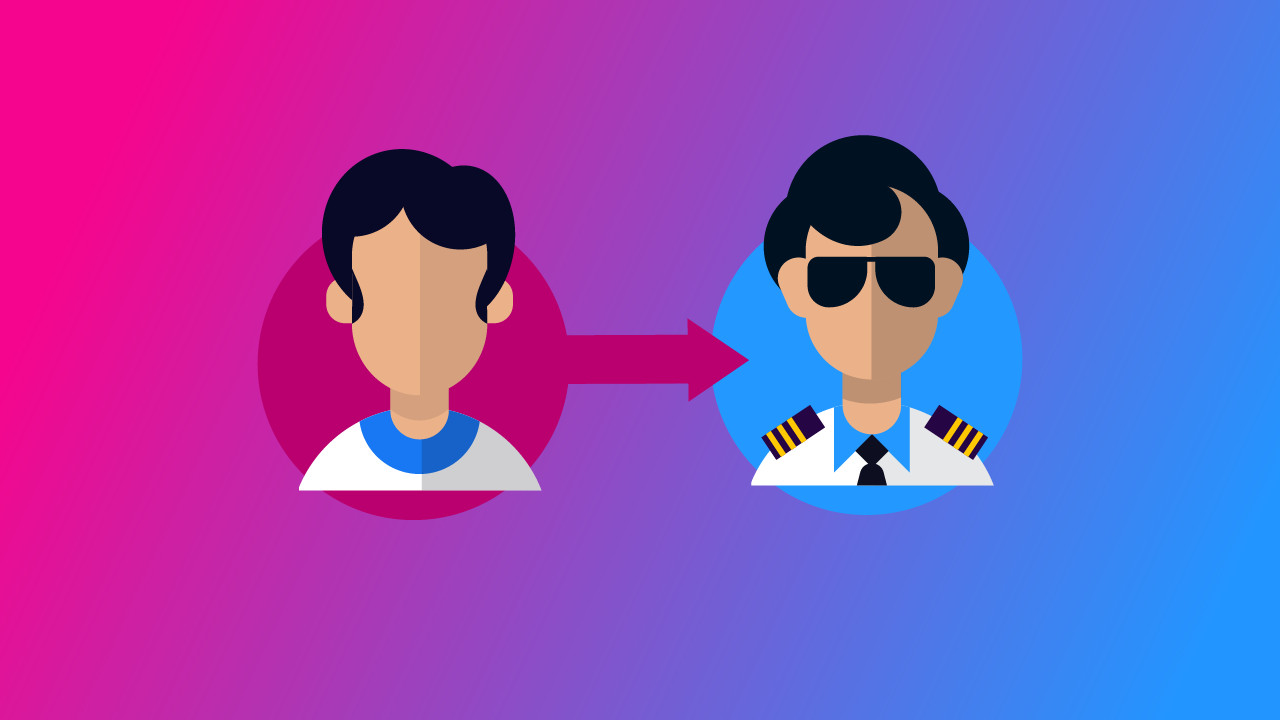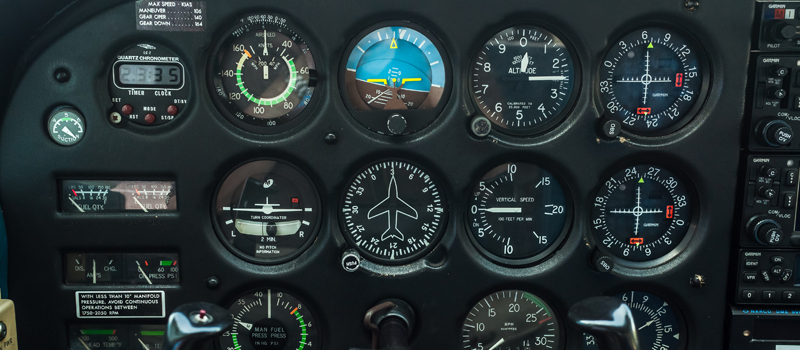-
Key Takeaways
-
What Are the Basic Requirements to Start Pilot Training?
- Third-Class Medical Exam
- Which License(s) Should You Get?
-
How to Choose the Right Flight School
- Choose the Right School
-
What Does Flight School Involve?
- Practical Flight Training
- Training Duration
-
Is Math and Physics Knowledge Necessary?
-
Budgeting and Financial Planning for Flight School
-
Conclusion
Starting on your path to becoming a pilot might feel like stepping into the unknown. You’re probably wondering where to begin, what’s expected, and how to make sense of the process.
Taking those first steps starts with understanding what lies ahead. The good news is, it’s not as complicated as it might seem once you know the basics.
You don’t need to be an expert in math or physics to get started, though having a knack for learning certainly doesn’t hurt. You’ll need to choose the right flight school, prepare your finances, and make sure you’re ready for training.
But don’t let that intimidate you. Let’s get you set up with what you need to begin your pilot journey.
Key Takeaways
- Getting a pilot’s license requires a high school education or GED and passing a basic medical exam.
- Flight training costs between $16,000 to $21,000 for a Private Pilot License.
- Choose a flight school with a good reputation, aircraft fleet, and instructor availability.
- Basic math skills are sufficient and advanced physics knowledge isn’t required.
What Are the Basic Requirements to Start Pilot Training?
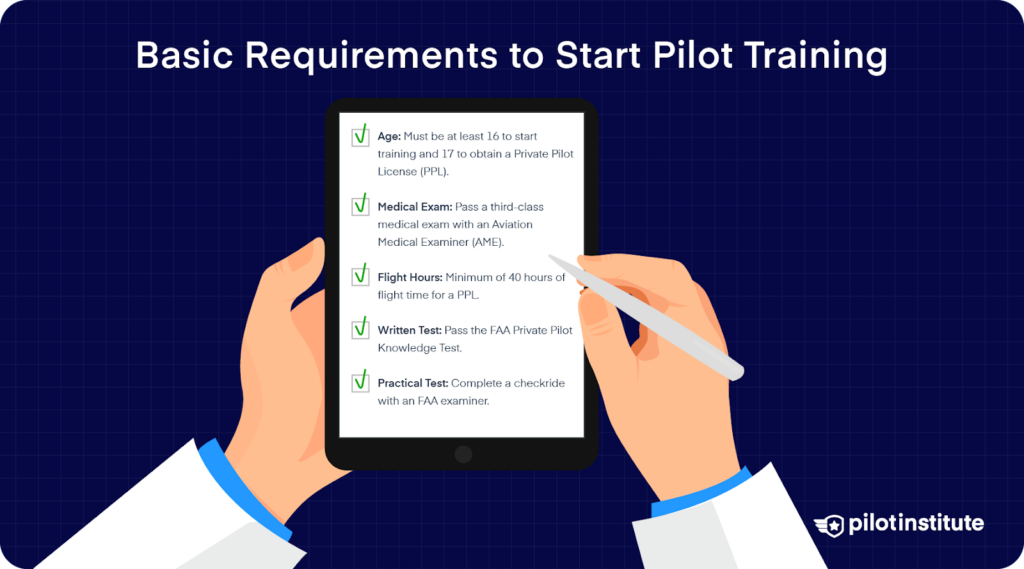
Surprisingly, it’s simpler than what most people think. The Federal Aviation Administration (FAA) has set requirements for those looking to become pilots, including an age limit, medical exams, and basic English skills.
When can you start? You must be at least 16 years old to begin training, but you need to be 17 to obtain a Private Pilot License. Many students start at 16 (with a Student Pilot License) and use this time to complete their ground school and take the FAA Private Pilot Knowledge Test.
Third-Class Medical Exam
All new pilots need to pass a medical exam. An Aviation Medical Examiner (AME) will evaluate your vision, hearing, and health. The medical certificate costs between $100 and $200 and is valid for five years if you’re under 40 and for two if you’re over 40.
Which License(s) Should You Get?

If you dream of flying small airplanes on weekends or piloting commercial airliners with hundreds of passengers, you need certain pilot licenses to reach your aviation goals. Let’s take a look at the requirements:
Student Pilot License
A student pilot license is your first step into aviation and is similar to a learner’s permit. A Certified Flight Instructor (CFI) will teach you how to fly and provide training until you take a practical test to receive your license.
- Minimum Age: 16 years.
- Flight Hours Required: No minimum hours.
- Medical Requirements: Third-class medical certificate, which acts as your Student Pilot Certificate.
- Requirements: Required for initial flight training.
- Cost: $100-200 (medical exam fee).
Recreational Pilot License (RPL)
A Recreational Pilot License lets you fly aircraft with only 180 horsepower or less during the day and in good weather. You must stay within 50 nautical miles of your home airport and can carry only one passenger.
- Minimum Age: 17 years.
- Flight Hours Required: 30 hours minimum.
- Education: High school diploma or GED.
- Medical Requirements: Third-class medical certificate.
- Written Test: Required.
- Practical Test: Required.
- Cost: $6,000-$10,000.
Private Pilot License (PPL)
A Private Pilot License is the most popular choice. If you want to take your friends and family flying or become an airline pilot, start your aviation journey with this license. It’s a prerequisite for more advanced ratings, such as Commercial and Airline Transport Pilot licenses.
- Minimum Age: 17 years.
- Flight Hours Required: 40 hours minimum.
- Education: High school diploma or GED.
- Medical Requirements: Third-class medical certificate.
- Written Test: Required.
- Practical Test: Required.
- Cost: $16,000-$21,000.
Commercial Pilot License (CPL)
A Commercial Pilot License opens the door to getting paid for flying. This is your ticket to careers such as flight instruction, banner towing, aerial photography, or corporate flying.
- Minimum Age: 18 years.
- Flight Hours Required: 250 hours minimum.
- Medical Requirements: Second-class medical certificate.
- Prerequisites: Private Pilot License.
- Written Test: Required
- Practical Test: Required.
- Cost: $55,000-$100,000.
Airline Transport Pilot License (ATP)
An Airline Transport Pilot License is the highest level of certification and is required to fly for commercial airlines. The license requires strict training, which includes simulator sessions and handling large aircraft.
- Minimum Age: 23 years.
- Flight Hours Required: 1,500 hours minimum.
- Education: Bachelor’s degree (for restricted ATP at 1,000 hours)
- Medical Requirements: First-class medical certificate.
- Prerequisites: Commercial Pilot License, Instrument Rating.
- Written Test: Required.
- Practical Test: Required.
- Cost: $5,000-$6,000 (not including previous ratings).
How to Choose the Right Flight School

Choosing the right flight school is an important part of your training journey. Start by looking into flight schools that are within a reasonable driving distance. You can choose from two types of training programs: Part 61 and Part 141 schools.
Why does this choice matter? Part 61 schools provide more flexible training options, while Part 141 schools provide full-time training with an FAA-approved structured program. With Part 61 schools, you can advance at your own pace, which is beneficial if you have a busy schedule.
Choose the Right School
Many professional pilots started their careers at Part 61 schools, which cost less than Part 141 programs. Consider Part 141 if you want to complete your training quickly, as many schools have lower flight hour requirements.
For example, students can earn their Private Pilot License in 35 hours at Part 141 schools versus 40 hours at Part 61. What sets excellent flight schools apart from average ones? When assessing schools, keep an eye out for these important factors:
- Safety record: Investigate the school’s safety record and maintenance practices.
- Aircraft fleet: Make sure they have an aircraft fleet for training and a sufficient number available.
- Instructor availability: Ask about the number of flight instructors available to train you.
- Weather patterns: Consider the local weather conditions and how that could impact training schedules.
- Cost structure: Be transparent about all fees, including aircraft rental and instructor charges.
Before making a final decision, you should visit several schools. Observe their operations. Are students getting enough flight time? Do instructors seem friendly? A reputable school will have well-maintained facilities and an organized training program.
Don’t hesitate to ask about their student pass rates and the average time for obtaining a license.
What Does Flight School Involve?

Flight training usually consists of ground school and practical flight instruction. Why is this important? Ground school provides the required knowledge in areas such as aircraft systems, aviation weather, flight planning, navigation, FAA regulations, and radio communications.
Students can complete ground school through in-person classes, online courses, or self-study materials. The goal is to learn as much as possible and successfully pass the FAA written exam.
Practical Flight Training
Remember that every flight hour brings you closer to earning your pilot’s license. It’s important to focus during your flight training sessions. In most flight schools, the practical flight training portion will follow a set progression:
- Basic aircraft control: Learning to fly straight and level, make turns, and perform climbs and descents.
- Airport operations: Mastering takeoffs, landings, and understanding traffic patterns.
- Emergency procedures: Practicing how to respond to various emergency scenarios.
- Navigation: Planning and going on cross-country flights.
- Night flying: Learning to operate the aircraft in low-light conditions and at night.
- Solo flight: Getting the experience to fly the aircraft on your own.
- Private Pilot License: Take a checkride to receive your license.
Training Duration
Your training will begin with an instructor showing you the basic maneuvers. Over time, you will take on more control until you are prepared for a solo flight. How long will it take to get your Private Pilot License?
The entire process usually takes about 3 to 6 months of regular training, although this can vary depending on your availability and weather conditions.
Is Math and Physics Knowledge Necessary?
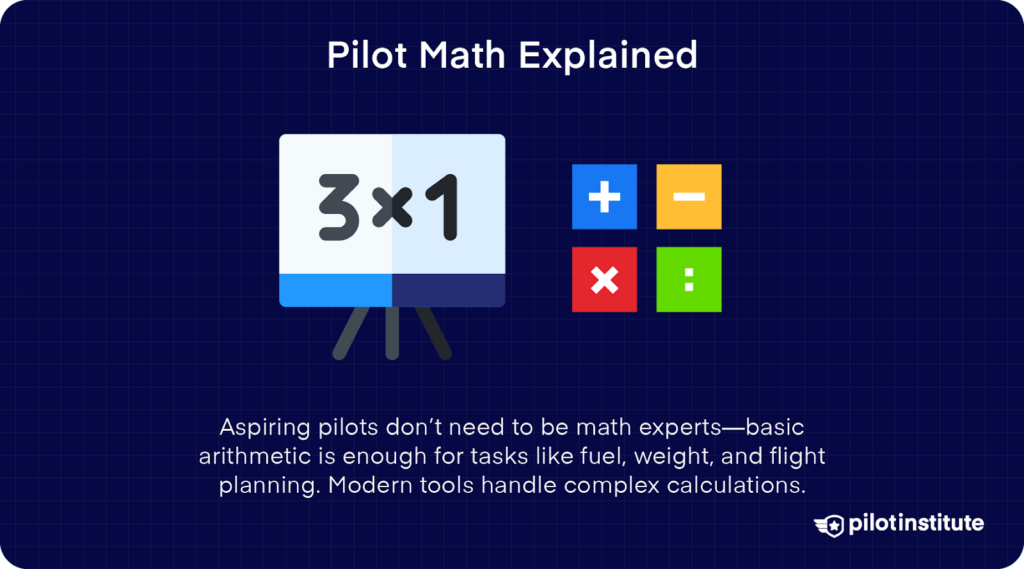
Many aspiring pilots have concerns about the math involved in flying. Does becoming a pilot require you to be a math genius? The reality is that you don’t have to be a math expert.
Basic arithmetic such as addition, subtraction, multiplication, and division are sufficient for most calculations you’ll need as a pilot.
The math you’ll apply focuses on practical tasks:
- Fuel calculations: Figuring out how much fuel you need to reach your destination or alternate airport.
- Weight and balance: Making sure the aircraft is loaded safely.
- Flight planning: Calculating time, distance, and fuel needs.
- Basic navigation: Grasping concepts like heading, speed, and position.
Nowadays, many modern tools such as flight computers, apps, and GPS systems can manage the more complicated calculations so you can concentrate on flying safely.
What about physics? The physics you’ll encounter is straightforward. During training, you’ll learn about Newton’s laws of motion, Bernoulli’s principle, and aerodynamic forces, including lift, thrust, and drag.
Budgeting and Financial Planning for Flight School
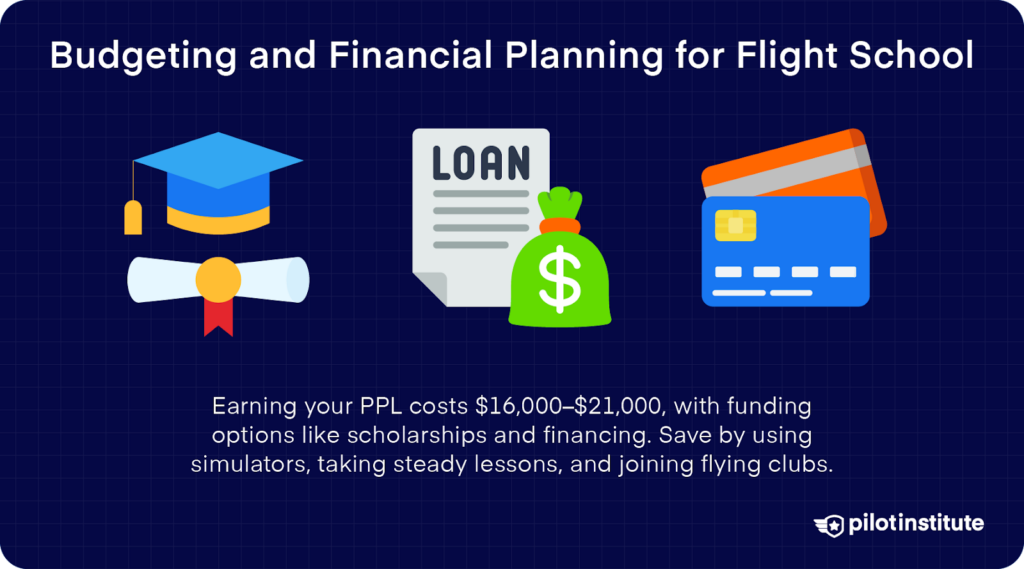
Getting your wings is expensive and requires proper financial planning. A Private Pilot License usually costs between $16,000 and $21,000. So, what are you actually paying for?
Here’s a detailed breakdown of the expenses involved:
- Aircraft rental: $130-$180 per hour.
- Instructor time: $50-$75 per hour.
- Ground school materials: $200-$400.
- Medical exam: $100-$200.
- Written test: $175.
- Checkride: $400-$600.
- Additional supplies (headset, charts, etc.): $500-$800.
Consider these funding options:
- Flight school financing: Many schools provide financing with payment plans.
- Aviation scholarships: Organizations like AOPA offer training scholarships.
- Part-time training: Can help spread costs over a longer period.
- Military service: Join the military to become an aviator.
You can save money by:
- Using flight simulators for practice.
- Coming prepared for each lesson.
- Studying ground school material.
- Taking flight lessons consistently.
- Joining a flying club for lower aircraft rental rates.
Conclusion
Starting your pilot journey is a commitment to a path that can change how you see the world. Sure, it’s not going to be easy, but the reward of taking control of an aircraft makes every bit of effort worth it.
Keep your focus on what drew you to flying in the first place. Let that drive keep you moving forward, even when the workload feels overwhelming, or doubts start to creep in.
Remember, it’s about the moments when you’re up in the air, the sun glancing off the wings, and realizing you’re right where you’re meant to be.
You might start this journey with questions, and that’s okay. You’ll find the answers as you go.
Fly safe!
